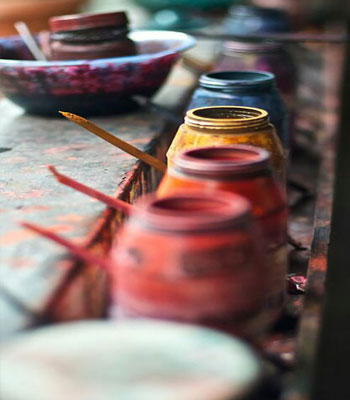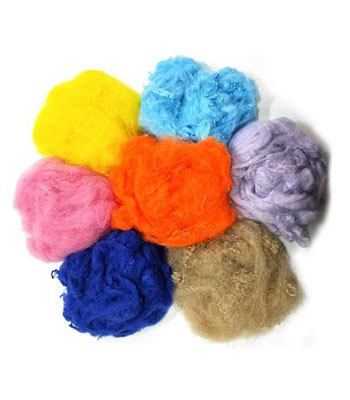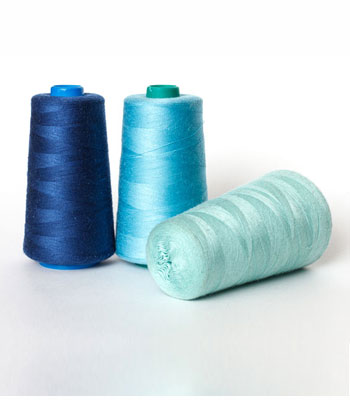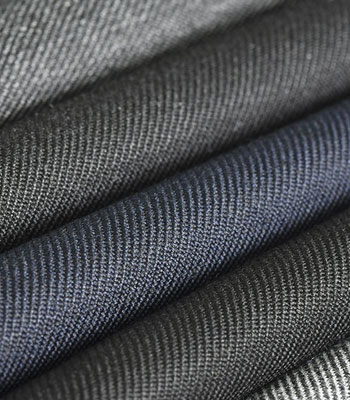Pigment dyes
$0.00Pigment dyes do not have any tendency of absorption or permeation in fabrics for this reason with the help of a special glue called binder they will be attached to the fabrics. With attention to the fact that dyes attach to the fabrics; after the process of dying, there is no need to wash the fabric and makes this method so cost-effective. Other characteristic to be mentioned: Printing of pigment usually is done on low-price fabrics. Their rubbing fastness is very high. Working with these dyes does not require any extra effort.
Pigment dyes
$0.00Pigment dyes do not have any tendency of absorption or permeation in fabrics for this reason with the help of a special glue called binder they will be attached to the fabrics. With attention to the fact that dyes attach to the fabrics; after the process of dying, there is no need to wash the fabric and makes this method so cost-effective. Other characteristic to be mentioned: Printing of pigment usually is done on low-price fabrics. Their rubbing fastness is very high. Working with these dyes does not require any extra effort.
Pigment dyes
$0.00Pigment dyes do not have any tendency of absorption or permeation in fabrics for this reason with the help of a special glue called binder they will be attached to the fabrics. With attention to the fact that dyes attach to the fabrics; after the process of dying, there is no need to wash the fabric and makes this method so cost-effective. Other characteristic to be mentioned: Printing of pigment usually is done on low-price fabrics. Their rubbing fastness is very high. Working with these dyes does not require any extra effort.
Polyester fibers
$0.00These synthetic fibers are produced from the polymerization of the viscosity of dimethyl terephthalate or Terephthalic acid and Ethylene glycol in the procedure which is named melt spinning. Polyester fibers are found in the market with other commercial names such as Dacron and Terylene. These fibers are used in making carpets, floor coverings, and sleeping products like pillows, quilts, mattresses, and dulls. Also Polyester fibers are mainly used in garments, clothes, different types of textiles. Their resistance against constant, heavy movements and their water resistance make them count as a perfect fiber to use as an ideal fiber in wet and humid environments.
Polyester fibers
$0.00These synthetic fibers are produced from the polymerization of the viscosity of dimethyl terephthalate or Terephthalic acid and Ethylene glycol in the procedure which is named melt spinning. Polyester fibers are found in the market with other commercial names such as Dacron and Terylene. These fibers are used in making carpets, floor coverings, and sleeping products like pillows, quilts, mattresses, and dulls. Also Polyester fibers are mainly used in garments, clothes, different types of textiles. Their resistance against constant, heavy movements and their water resistance make them count as a perfect fiber to use as an ideal fiber in wet and humid environments.
Polyester fibers
$0.00These synthetic fibers are produced from the polymerization of the viscosity of dimethyl terephthalate or Terephthalic acid and Ethylene glycol in the procedure which is named melt spinning. Polyester fibers are found in the market with other commercial names such as Dacron and Terylene. These fibers are used in making carpets, floor coverings, and sleeping products like pillows, quilts, mattresses, and dulls. Also Polyester fibers are mainly used in garments, clothes, different types of textiles. Their resistance against constant, heavy movements and their water resistance make them count as a perfect fiber to use as an ideal fiber in wet and humid environments.
Polyester Yarn
$0.00The largest share of produced yarns including synthetic and natural is made up of the polyester fibers. Polyester fibers, like all other synthetic fibers, are manufactured industrially. In terms of characteristics, they are good alternative for natural fibers, such as cotton. To produce polyester, the combination of dimethyl terephthalate and polyethylene glycol or terephthalic acid (a substitute for dimethyl terephthalate) is used in the vicinity of proper catalysts.
Polyester Yarn
$0.00The largest share of produced yarns including synthetic and natural is made up of the polyester fibers. Polyester fibers, like all other synthetic fibers, are manufactured industrially. In terms of characteristics, they are good alternative for natural fibers, such as cotton. To produce polyester, the combination of dimethyl terephthalate and polyethylene glycol or terephthalic acid (a substitute for dimethyl terephthalate) is used in the vicinity of proper catalysts.
Polyester Yarn
$0.00The largest share of produced yarns including synthetic and natural is made up of the polyester fibers. Polyester fibers, like all other synthetic fibers, are manufactured industrially. In terms of characteristics, they are good alternative for natural fibers, such as cotton. To produce polyester, the combination of dimethyl terephthalate and polyethylene glycol or terephthalic acid (a substitute for dimethyl terephthalate) is used in the vicinity of proper catalysts.
Polyester-viscose fabric
$0.00The reason behind blending these two fibers is to improve the strength, durability, color, and texture. And also decrease the cost of making the before said fabric. One of the most useful blended fabric, which is used in the textile industry, is polyester – viscose (35/65, 25/75, 33/67) with polyester using in the highest percentage in the form of single-ply and two-ply yarn.
Polyester-viscose fabric
$0.00The reason behind blending these two fibers is to improve the strength, durability, color, and texture. And also decrease the cost of making the before said fabric. One of the most useful blended fabric, which is used in the textile industry, is polyester – viscose (35/65, 25/75, 33/67) with polyester using in the highest percentage in the form of single-ply and two-ply yarn.











